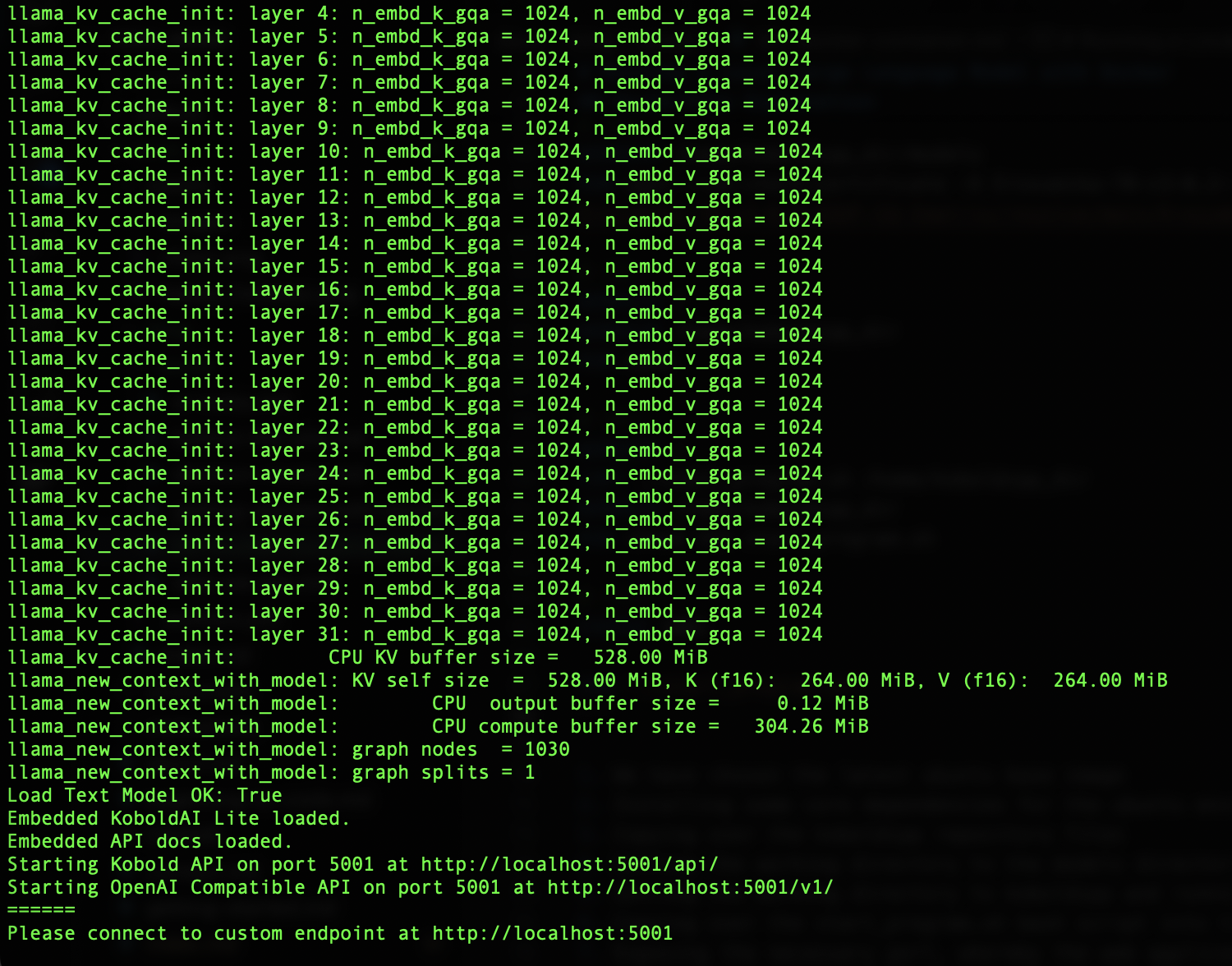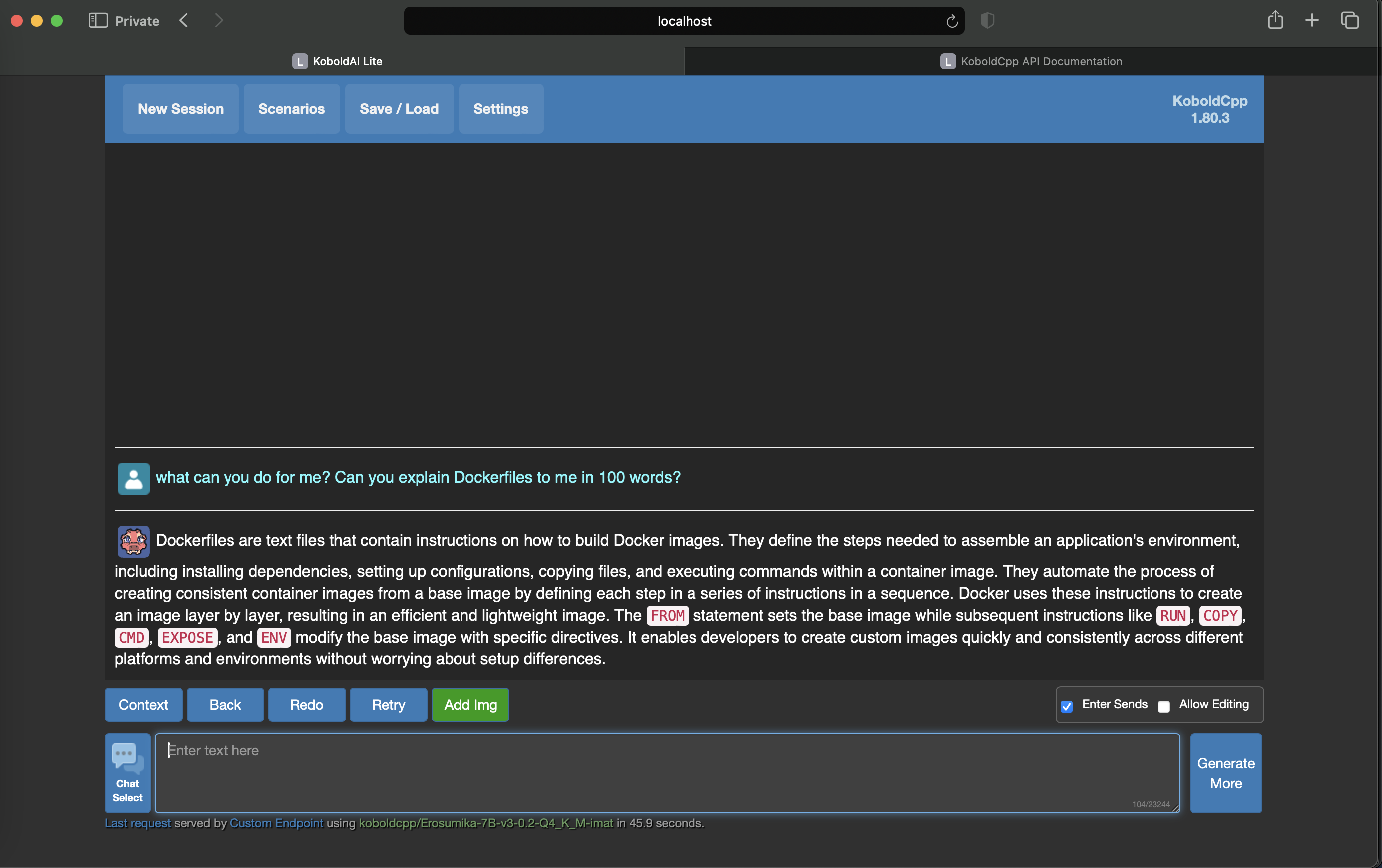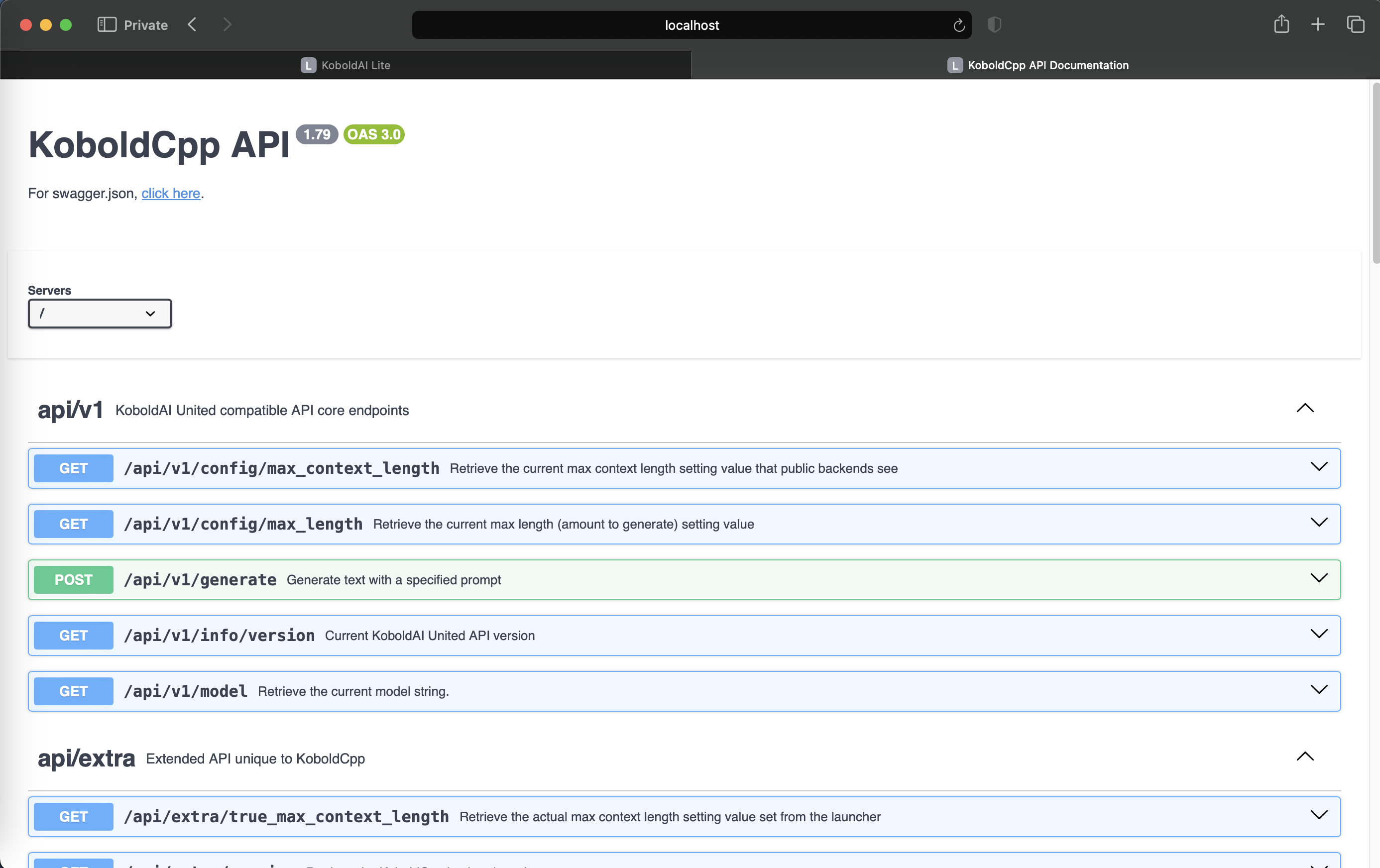Running a Local Large Language Model with Docker
This guide will walk you through running a local large language model (LLM) using Docker. We'll use the Koboldcpp repository, a lightweight and efficient LLM runner.
Prerequisites
Requirements
- Docker: Ensure Docker is installed and running on your system.
- Git: Required for cloning repositories.
- Internet access: To download the required model file within the model build.
Dockerfile Explanation
The Dockerfile below sets up an environment to run Koboldcpp and the Erosumika-7B model.
FROM ubuntu:latest # (1)!
# (2)!
RUN apt-get update && apt-get install -y \
sudo \
python3-pip \
gfortran \
gcc \
git \
curl \
wget
# (3)!
WORKDIR /
RUN mkdir ./home/koboldcpp_dir
COPY ./koboldcpp_dir ./home/koboldcpp_dir
# (4)!
WORKDIR /home/koboldcpp_dir/models
RUN wget --no-check-certificate -O Erosumika-7B-v3-0.2-Q4_K_M-imat.gguf "https://huggingface.co/Lewdiculous/Erosumika-7B-v3-0.2-GGUF-IQ-Imatrix/resolve/main/Erosumika-7B-v3-0.2-Q4_K_M-imat.gguf?download=true"
# (5)!
WORKDIR /
WORKDIR /home/koboldcpp_dir
RUN make
# (6)!
WORKDIR /
COPY ./start_program.sh /home/koboldcpp_dir
WORKDIR /home/koboldcpp_dir
RUN chmod 555 start_program.sh
# (7)!
EXPOSE 5001
CMD "./start_program.sh"
- We have chosen the latest ubuntu base image
- Installing some core dependencies for the ubuntu environment
- Copying over the koboldcpp repository files
- Setting the working directory to the models directory of koboldcpp and downloading a model from Huggingface
- Setting the working directory to koboldcpp and running the 'make' command to compile the entire build
- Copying over the start_program.sh bash script into the koboldcpp directory and granting it privilege to run
- Exposing the necessary port, whereby the web application and API can be accessed.
Workflow Diagram
Below is a high-level workflow of how the container is set up and executed:
graph TD
A[Start] --> B[Download or Clone Koboldcpp Repository]
B --> C[Set Up Environment with Dockerfile]
C --> D[Configure start_program.sh]
D --> E[Build Image]
E --> F[Run Container]
F --> G[Access LLM Locally via web application and API]Steps to Execute
Clone the koboldcpp Repository
Within your project directory, run this command to clone the repository into a folder called koboldcpp_dir. Alternatively, you can also download the latest code release and place it in a similarly named folder.
git clone https://github.com/LostRuins/koboldcpp koboldcpp_dir
Prepare the start_program.sh bash script
Within your project directory, create a file called start_program.sh, which will contain your runtime commands for running koboldcpp within your container. You may customize this with various options as specified in the koboldcpp docs.
Example
python3 koboldcpp.py \
--contextsize 4096 \
--threads 8 \
--model ./models/Erosumika-7B-v3-0.2-Q4_K_M-imat.gguf
Build the Docker Image
Build the Docker image using the Dockerfile provided:
docker build -t koboldcpp-image .
This step can take a few minutes depending on your internet speed and computer performance, as all the project dependencies, including the GGUF model takes place here. When you attempt to re-build the same image, Docker will cache all the un-edited commands, so the longer wait should only be on the first build for most use cases.
Run the Container
Execute the following command to start the container:
docker run --name koboldcpp-container -p 5001:5001 koboldcpp-image
A Successful Run of the Docker container

Access the LLM
Open your browser and navigate to http://localhost:5001 to interact with the LLM or visit http://localhost:5001/api to interact with the Swagger docs for the API backend.
The KoboldCPP UI

The KoboldCPP API Docs (Swagger

Tips and Notes
Optimizations
- Use a GPU-enabled environment for faster inference (requires additional setup).
Model Format
The Erosumika-7B-v3-0.2-Q4_K_M model is stored in GGUF format, optimized for Koboldcpp.
With this setup, you should have a functional environment to run a large language model locally using Docker and Koboldcpp. Happy experimenting!